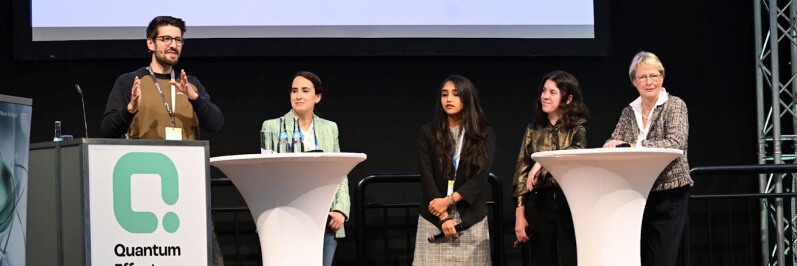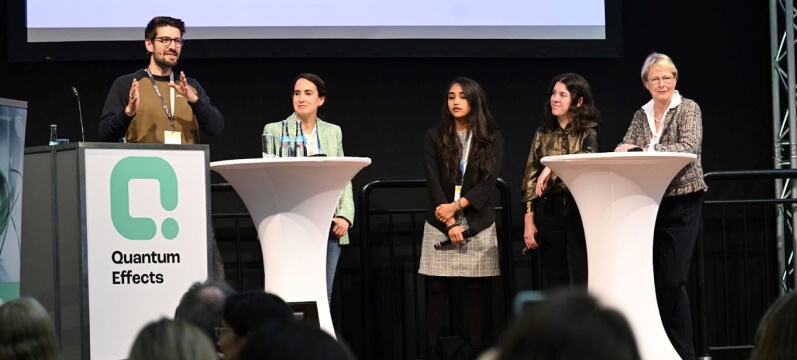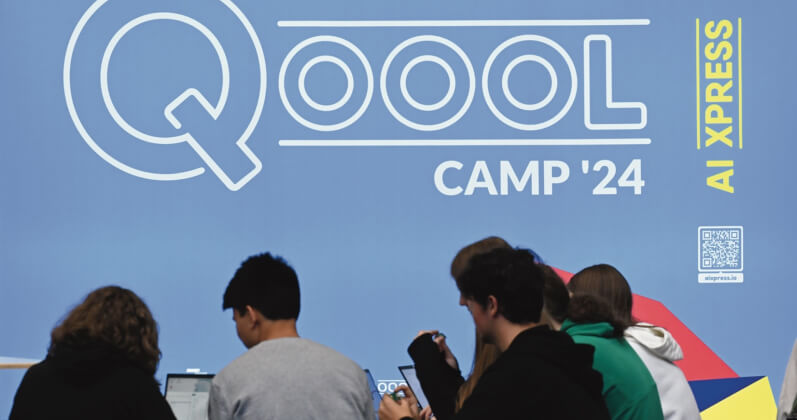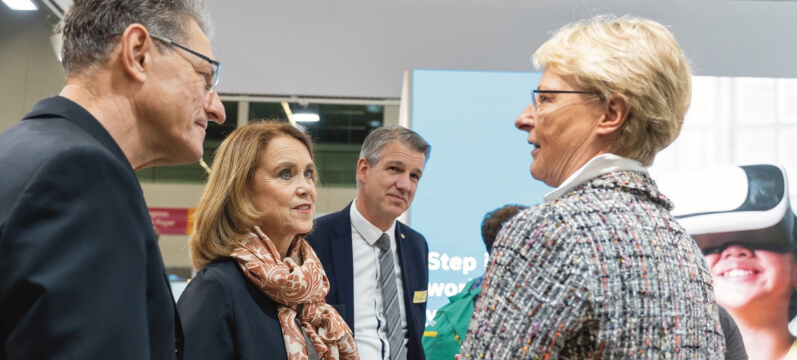How Quantum Tech is Empowering Diverse Leadership and Workforce
Picture this: a tech whiz, deep in thought, crafting lines of code at a bustling coffee shop. Did you envision a man or a woman? Chances are, it was a man. This gender stereotype doesn’t reflect the diversity we need in tech. While the number of women in IT is increasing, with around 35% representation, the quantum computing field still lags behind, with only 19% female participation according to the Unitary Fund Survey.

To truly democratize quantum technology, we need a diverse workforce that reflects the world around us. This means including people of all genders, ages, backgrounds, and areas of expertise. From seasoned experts to curious newcomers, everyone should have a basic understanding of quantum concepts. By empowering inclusivity, we can reach the fullest potential of this revolutionary technology. But what are the most effective ways to create an inclusive and equitable environment?

I recently participated in the Quantum Effects event in Stuttgart and had the pleasure to join a panel discussion titled, “Let’s get (Quantum) Physical! How Quantum Tech is Empowering Diverse Leadership and Workforce”, hosted by Dr. Stefan Seegerer. Alongside me were esteemed panelists: Esperanza Cuenca Gómez, Developer Relations Manager for Quantum Computing at NVIDIA, PhD Marta Pascual Estarellas, CEO of Qilimanjaro Quantum Tech, and Dr. Katrin Kobe, CEO of Bosch Quantum Sensing. Together, we explored how we can create a more inclusive and diverse leadership landscape in the field of quantum computing. I will highlight some key takeaways.

How can we increase accessibility to quantum education?
Even if you’re deeply involved in the quantum world, it’s easy to forget that many people still have only a vague understanding or no knowledge at all of quantum technology. This lack of understanding can create a significant barrier to the widespread adoption and acceptance of quantum technologies. To overcome this challenge, it’s crucial to develop effective communication strategies that bridge the gap between quantum experts and the general public. Some suggestions include:
- Provide scholarships and financial aid: Offer financial support to individuals from underrepresented groups to help them pursue education and research in quantum computing.
- Create mentorship programs: Establish mentorship programs that connect experienced professionals with early-career researchers and especially students from diverse backgrounds.
- Offer outreach initiatives: Conduct outreach programs in schools, universities, and community centers to raise awareness of quantum computing and inspire interest among diverse populations. A leading example is the Quantum Social Lab in Munich. More details on where to involve as a student can be found in our Quantum Career Articles (Part1, Part2).

Why is it important to teach what quantum is NOT?
Quantum computing is often misunderstood, with many believing it’s a magic bullet that will instantly solve all our problems. While quantum technology holds great promise, it’s important to understand its limitations and realistic expectations. Some of the points that need to be clarified to a new audience:
- Quantum computing is not a universal speed-up: It won’t make everything faster. Quantum computers excel at specific types of problems, but they may not be advantageous for every task. That is something that needs to be clearly understood.
- Quantum computing is not yet a mature technology: It’s still in its early stages of development, with significant challenges to overcome before widespread commercialization. Quantum computers are highly sensitive to noise and errors, making it difficult to maintain their quantum states for long periods. Researchers are actively working on developing error correction techniques and improving the stability of quantum hardware.
- Quantum computing won’t replace classical computers: Quantum computers are expected to complement classical computers, not replace them entirely. Classical computers will continue to be essential for many tasks, such as running general-purpose applications and handling everyday computations. Quantum computers will be most valuable for solving specific problems that are intractable for classical computers.
How can we ensure that quantum sees more women entering the field?
In our discussion at the Quantum Effects we stumbled upon on an interesting trend: the proportion of women involved in the quantum industry is growing faster compared to other technical fields, said Dr. Katrin Kobe. However, the words of Marta Pascual Estarellas, mark that success in quantum computing requires more than just representation. It also demands courage to fail and a relentless pursuit of learning. Quantum technology is moving fast, which makes it even twice as essential for every quantum enthusiast to accept challenges, learn from mistakes, and continually update their knowledge. The ability to learn quickly and adapt to new information is a crucial skill for anyone working in quantum. As the CEO of Qilimanjaro emphasized: It is important to fail because only failures show us where we need to improve.

In summary, if we want to be successful in the establishment of a diverse and inclusive quantum computing community, we must increase accessibility to education, address misconceptions about quantum technology, and promote diversity. By doing so, we can create a more equitable and innovative ecosystem.
